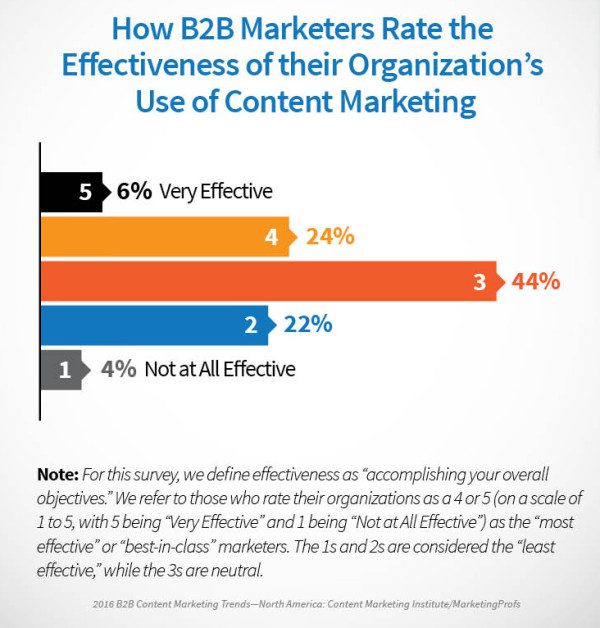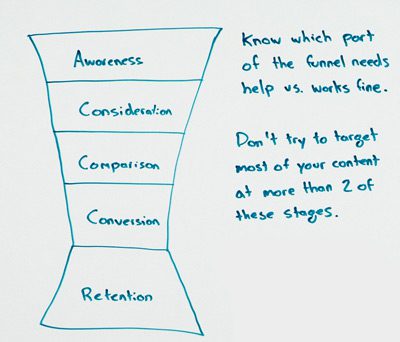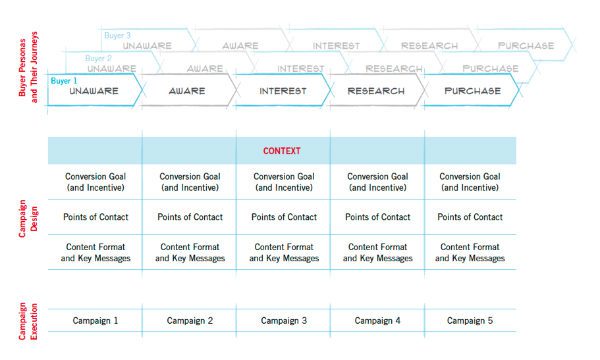When it comes to marketing in the 21st century, it seems like everybody’s trying to sell you something. From billboards to magazine ads, traditional marketing strategies have overloaded the population to the point of desensitization. It’s just not enough anymore.
But that’s where content marketing comes in.
Content marketing is one of the most effective ways to generate leads, and done well, it can bring you new business at a fraction of the cost of traditional marketing. Content marketing works by creating relevant and valuable content with the intention of triggering a certain desirable action – like subscribing to your services.
It’s essentially a way to pitch your services without a hard sell. You’re informing your audience, they want to know more, and so they keep coming back. They’re rewarded with information, and you’re rewarded with customer loyalty. It’s a win-win.
However, many marketers today are just as confused as ever when it comes to successfully establishing a strategy for content marketing. According to Content Marketing Institute, 55% of business-to-business (B2B) marketers have said that they’re unclear about what an effective content marketing strategy looks like, and only 44% of B2B marketers actually had what they would consider an effective strategy in place.

Source: Kissmetrics
So what exactly is a content strategy, and why is it so important to have one?
Why Content Strategy Matters
Content marketing is important because not only do your customers benefit from the information they receive, but having more content on your website – like a blog, white papers, or articles – improves your search engine rankings, which inevitably helps you gain new leads.
However, without a strategy in place to facilitate this content, you risk missing out on both of those benefits. A content strategy, therefore, is a documented plan to develop and manage that content for maximum impact.
Think of a content strategy like an editorial calendar, only more encompassing. It should tell you what audience your content is meant for, what topics should be included, and even what format that content should be presented in.
Having a good content strategy will also keep you from the dreaded “content shock” by helping you produce effective content (but we’ll get to that later).
B2B vs. B2C Content Strategies
One thing to keep in mind when developing a content strategy is that there’s a difference between marketing to a business rather than to a customer.

Source: Moz
A B2B marketing funnel is similar to a B2C funnel:
- Potential customers become aware of something you’re selling – in this case, a service (SaaS B2B) rather than a product (B2C)
- They take time to consider whether it will solve their problem
- They compare it against other solutions
- They convert (or not)
But the main difference between a B2B sale and a B2C sale is retention. A B2B company – especially a SaaS company – relies on their customers coming back for more. SaaS customers aren’t just there to buy a product one time; they’re counting on your business for months or even years at a time.
Marketing a plethora of content to customers over a long period of time can be far more challenging than developing a single piece of content once or twice. In order to be successful, you’ll need an effective strategy that will keep people happy over the long haul.
Elements of an Effective Strategy
But what exactly makes a content strategy effective? It comes down to a few things: knowing your audience, setting specific goals, and choosing the right formats.
Knowing Your Audience
As John Romero says, “Only one strategy can’t miss, and that is to market to your best customers first, your best prospects second, and the rest of the world last.”
When it comes to an effective strategy, the first question you need to ask is, “Who is my best customer?”
Your customers come to you for a reason, and normally it’s to solve a specific pain point. They want solutions to what ails them, but they don’t want you to just solve all their problems for them; they want to understand the pressing issues, too. They want to be informed.
The best content strategies are aimed at providing information that your audience is searching for. What do they want to know about? What do they care about? What questions do they come to you with? Where are they in their journey? What topics would help them do their jobs better? What information do they need to really help their customers?
If you can answer those questions, you’re ready to build a content strategy.
Setting Specific Goals
Once you understand who your target audience is and what they’re all about, it’s time to determine exactly what actions you want them to take as a result of encountering your content.
After all, content without action doesn’t actually help your business. Your content, while informative, should also lead your customers to do something specific; it should help them convert.
Your ultimate goal in content marketing is to convert your target audience into paying customers, so your strategy should center on smaller goals that will help them through that process. Those smaller goals could be opening an email, subscribing to your blog, or signing up for a free trial. It doesn’t matter what it is, but it should be specific and measurable.

Source: CMI
Do you want your visitors to become subscribers? Do you want them to download specific information? Do you want to capture emails for marketing campaigns? Do you want them to fill out surveys? How do you want your customers to interact with your business?
If you need an example of a site that sets goals like this, consider HubSpot. The bulk of their content marketing strategy focuses on their blog and premium content offers. Their blog receives over one million pageviews a month, and they use CTAs that align with their customer’s interests to help them move through the sales funnel.
Choosing the Right Format
Once you understand your audience and you know what you want them to do, the final step is to determine how you want to get them to do it: what’s the format of your content going to look like?
B2B content strategies can release content in a number of ways: blogs, white papers, email campaigns, webinars, ebooks, infographics, etc. Any way to share information is a viable source of content marketing.
But what format will work for your audience? It all depends on what they need, where they gather, and the action you want them to take. Is your audience mostly digital? Will they come back to your site if you have a blog? Do they want something they can take with them to train their employees/customers, like an ebook? Do they want to download content or simply read it from a browser, like a blog?
Keep in mind that you can create a large piece of content like an ebook, white paper, or report, which you can also repurpose into individual blog posts. The same process works in reverse; a blog can be turned into a larger project, too.
Or, you could follow in the footsteps of Kroll, a SaaS company that incorporates a blog alongside a robust resources page that includes webinars, whitepapers, benchmark reports, and case studies.
Just remember, once you pick a strategy, test it out before you move on. Choose the best method to fit your audience and then keep working on adding layers as you go. If it’s not working, abort and try something else. Play around with it until you find the right method for both you and your audience.
Final Thoughts
Content marketing is an important part of our modern world, and having a great content strategy can help keep your business in the black if executed properly. The keys to success come down to understanding your audience, knowing how you want them to interact with your business on a long-term basis, and choosing a way of communicating with them that benefits the both of you.